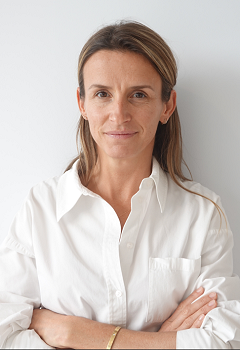World Cancer Day - 2025
News (04/02/2025)
 On the occasion of World Cancer Day we spoke with Dr Chloé Spilleboudt, head doctor at the Jules Bordet Institute, the integrated cancer centre in Brussels. We discussed the current cancer situation in Belgium, the major challenges in treating the disease and the treatment innovations proposed by the Institute.
On the occasion of World Cancer Day we spoke with Dr Chloé Spilleboudt, head doctor at the Jules Bordet Institute, the integrated cancer centre in Brussels. We discussed the current cancer situation in Belgium, the major challenges in treating the disease and the treatment innovations proposed by the Institute.
Q : Dr Spillebout, can you tell us about the present situation? Research is progressing, screening is more widespread and there seems to be greater awareness of health. Is it true to say that cancer is decreasing or, on the contrary, is it increasing?
Dr Spilleboudt: In Belgium, the incidence of cancer shows different trends depending on gender and the type of cancer. Since 2006, after making adjustments for age, we have seen a 21% increase in cancer among women, to a large extent due to the increase in lung cancer. Among men, on the other hand, we have seen a slight decrease, of 0.4 %. In 2021, approximately 465 000 persons were living with cancer in Belgium, or 4% of the population.
The most frequently diagnosed types of cancer vary according to gender. Among men, the most common cancers are prostate cancer, colorectal cancer and lung cancer. Among women, it is breast, colorectal and lung cancer.
Q : Is this increase attributable to better detection?
Dr Spilleboudt: Yes, in part. The increased incidence can be attributed to improved screening programmes and better awareness. That said, for some cancers, such as lung cancer in women, we are seeing a real increase independently of progress in detection and rather due to an increase in smoking.
Q : The Jules Bordet Institute is the only integrated cancer centre in Belgium. Why is it so important for patients to be treated at a centre of this kind?
Dr Spilleboudt: The advantage of being treated at an integrated centre such as the Jules Bordet Institute is really the holistic care that we can offer the patient. This of course includes treatment of the disease itself but also psychological and social support, rehabilitation and the support of coordinating nurses who are specialised in cancer care. The patient can have access to highly innovative treatment that uses the latest technology, such as MRI-Linac radiotherapy sessions, radiotheranostics therapy and many other innovative treatments .
We also have a unit with 12 beds dedicated exclusively to the new therapies, the New Treatment Unit, which enables patients to take part in clinical trials and thereby benefit from experimental treatment. Our research floor of 10 000 m² dedicated entirely to research enables us to be at the forefront of cancer research.
In short, being treated at an integrated cancer care clinic such as the Jules Bordet Institute is a guarantee of receiving complete, innovative and personalised care at a single hospital.
Q : You mention radiotherapy technology, radiotheranostics. Can you tell us a little about the recent innovations that are benefitting patients at the Jules Bordet Institute?
Dr Spilleboudt: Generally speaking, progress in oncology is permitting a number of major innovations. Personalised medicine, for example, adapts treatment according to the genetic characteristics of the tumour of the individual patient. Immunotherapy stimulates the immune system to combat cancer cells, while targeted therapies home in on the specific molecular abnormalities of the cancer cells.
At the Jules Bordet Institute we also use advanced radiotherapy techniques, such as the MRI-Linac, a machine we acquired thanks to funding from the Jules Bordet Association, the Institute’s biggest donor. This permits a more precise radiation that adapts to the patient’s anatomy, thereby reducing side effects. We are one of the few centres in Belgium to be able to propose this. Again thanks to the Jules Bordet Association, the department is also working on flash therapy and total MRI workflow projects that are the future of radiotherapy. We also have a lot of innovations to propose in nuclear medicine with radiotheranostics that consists of identifying a “target” expressed by cancer cells, creating a “vector” that recognises the target and then attaching an isotope to this vector that will radiate the tumour selectively. Already recognised and applied for neuroendocrine tumours and prostate cancer, this treatment is now being extended to other cancers. The nuclear medicine department, which has been a leader in this field for many years thanks to the support of the Association Jules Bordet, is already actively working on this expansion. We can also propose CAR-T therapy, a revolutionary method that involves genetically modifying the patient’s immune cells in the laboratory and then reinjecting them so that they can then attack the cancer cells.
Q : What are the principal challenges facing cancer treatment in 2025 and how can the Jules Bordet Institute respond to them?
Dr Spilleboudt: In 2025 cancer care and treatment must meet a number of challenges. The ageing population will increase the number of elderly patients that require an adapted approach. The integration of new technologies, such as artificial intelligence and big data, will play a key role in improving diagnosis and treatment. We are already using these new technologies to diagnose breast cancer but there is huge potential to be explored. We must also meet the psychological and social needs of patients and their families, taking into account the post-cancer stage and its psychological impact. Several survivorship projects are already up and running, especially for patients with breast, gynaecological, haematological and also urological cancers.
Finally, one of the biggest challenges will be fair access to care and managing the financial impact of these new therapies. The Jules Bordet Institute is determined to provide the best treatment while guaranteeing equal access to medical innovations for all patients.